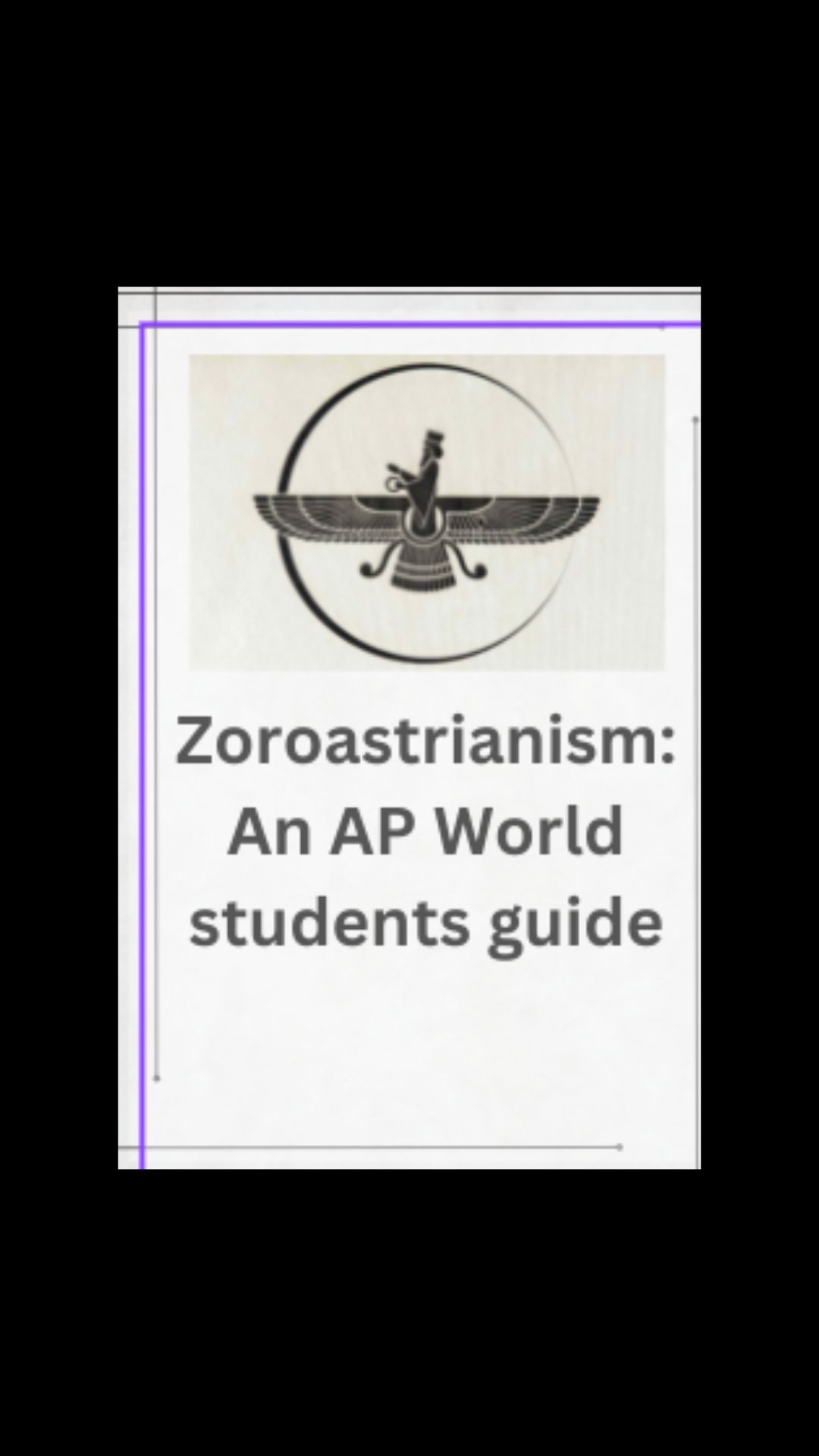This week in my AP World History class, we were assigned a religion to research for a project. Instead of getting the common religions like everyone else, I got an unfamiliar religion called Zoroastrianism. After hours worth of studying, I found it as such an interesting religion but was disappointed to know that this religion is almost non-existent. If you want some fun facts, here is a little guide to Zoroastrianism.
Zoroastrianism is one of the oldest monotheistic religions still in existence, predating Christianity and Islam by many centuries.
The religion of Zoroastrianism had begun in the 6th century BCE. Historians claim that Zoroastrian had taken root in Central Asia during the second millennium B.C.E., and from there spread south to Iran. In particular, the regions of Sistan and the Helmand basin play an important part in Zoroastrian culture.Zoroastrianism lost its dominant position when the Arabs invaded and defeated the Sasanian Empire.Turkish and Mongol invasions in the 11th and 13th centuries was an important milestone in the decline.
Although Zoroastrianism is one of the oldest religions in the world, today it is practiced by less than a million people mostly living in India and Iran.
It is believed that zoroastrianism was founded by priest Zarathrusta in Persia.Zarathrusta taught the teachings of the highest god, Ahura Mazda, and his clash with the destructive spirit, Angra Mainyu.
Symbol:
The Faravahar is an ancient symbol of the Zoroastrian faith. It depicts a bearded man with one hand reaching forward. He stands above a pair of wings that are outstretched from a circle representing eternity.
Zoroastrians believe that there is one supreme god, Ahura Mazda (Wise Lord) and their founder is the priest Zarathustra. The religious ideas and philosophy of Ahura Mazda has been written in the sacred text of the Avesta. Fire and water are crucial elements of this religion. And all temples have a fire always active that must never be extinguished.
Zoroastrianism emphasizes the ongoing battle between good and evil. It is the contest between the religion’s God, Ahura Mazda, and an evil spirit, Ahriman. People who follow this religion have the freedom to make good or bad choices. However they are encouraged by Zoroaster to think good thoughts, say good words and do good deeds.
Dietary restrictions : Many people avoid eating pork and beef. However, they eat all vegetables, fish, and other types of meats.
Some believe that Zoroastrianism has some similarities with Hinduism and Islam. Zoroastrianism is thought to share a common heritage with Hinduism and its Vedic Values. However, some of the hindu values are different from what Zoroastrians believe.
Similarities with Hinduism:
1. The Vedic sacrifices are called Yajna and Zoroastrian ones Yasna.
2. Both use fire in their sacrificial ceremonies and consider fire as sacred and auspicious.
3. Vedic tradition has priests, Zoroastrianism has Zator.
4. Both traditions have similar names for some elements like Apah (water) and Vayu (air).
5. The celestial beings having musical talents are called Gandharvas in the Vedic tradition and Gandarewa in Zoroastrianism.
Similarities and differences with Islam:
Islam was founded by Muhammad in 7th century AD; Zoroastrianism was founded by Zoroaster in 7th century BC.
Zoroastrians believe in only one God Ahura Mazda; Muslims believe in only one God Allah(Both are monotheistic religions)
Zoroastrianism is confined to Iran and India; Islam is spread all over the world.
The sacred text of Zoroastrianism is Avesta; Quran is the sacred text of Islam
Current world population of Zoroastrians is about 100 thousand; that of Muslims is about 1.5 billion
Citations:
https://www.hinduwebsite.com/hinduism/h_zoroa.asp
http://www.differencebetween.net/miscellaneous/religion-miscellaneous/difference-between-zoroastrianism-and-islam/
